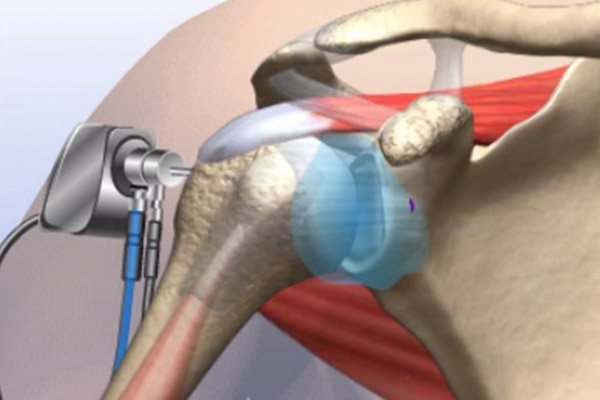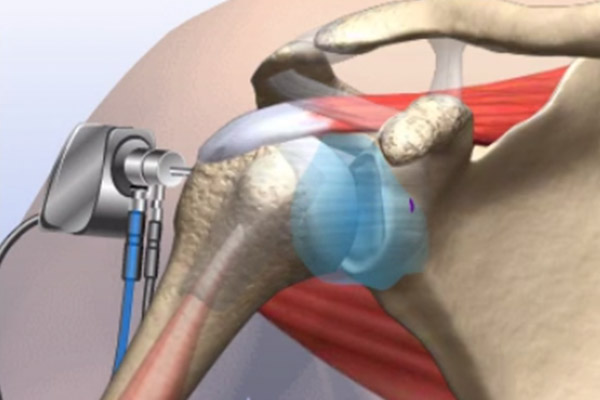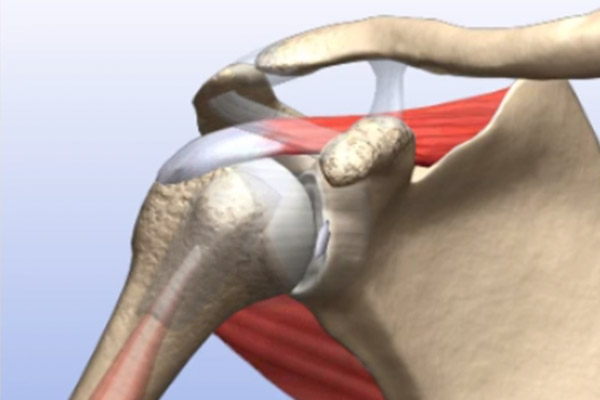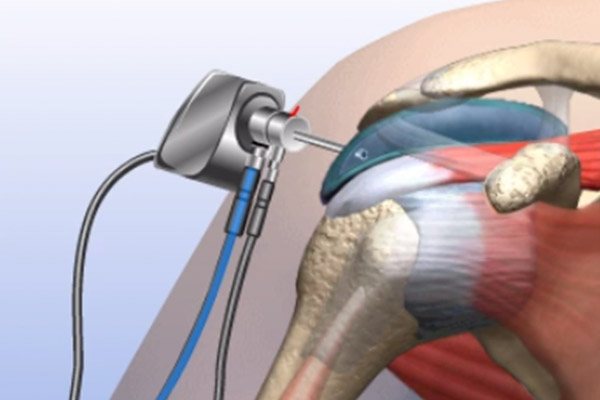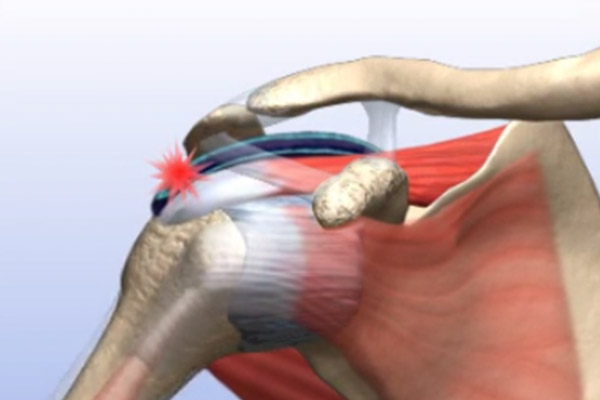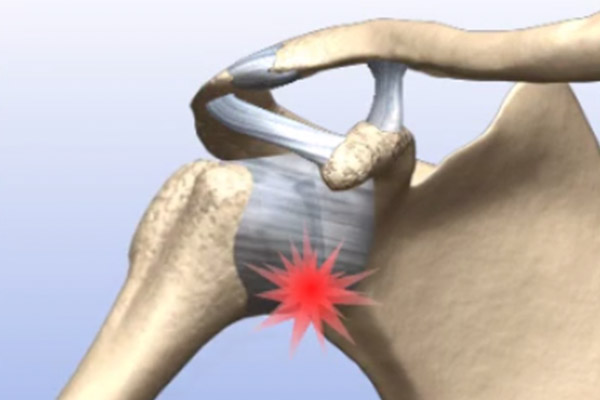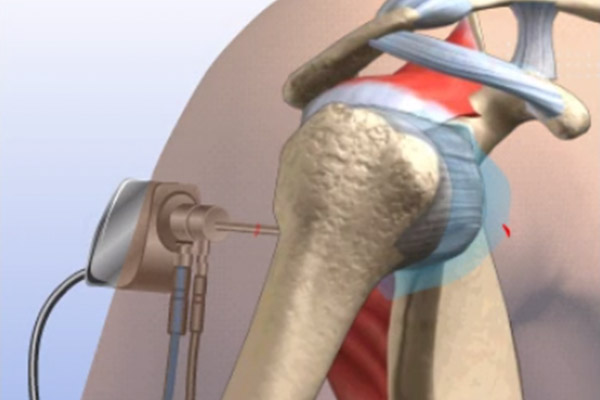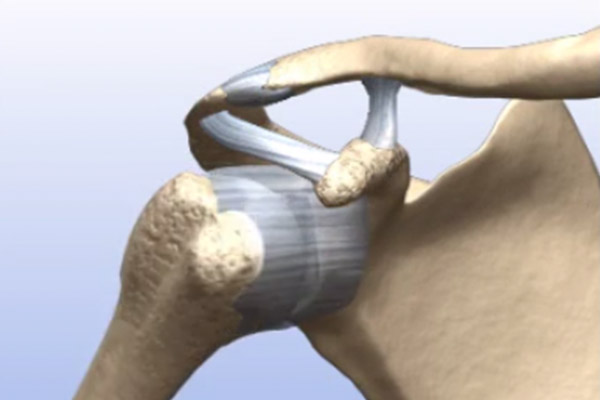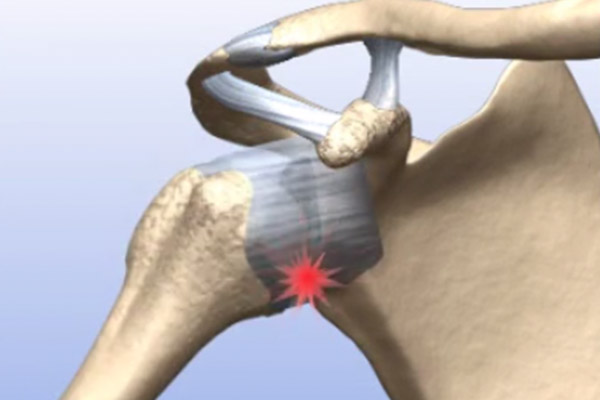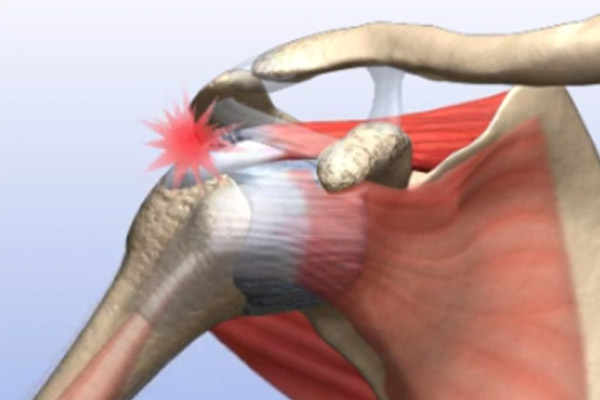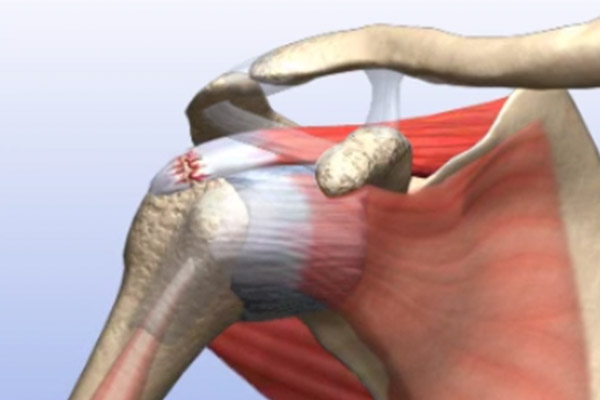
Overview
The central portion of the shoulder is comprised of the humeral head (ball) and the glenoid (socket). The humeral head is the uppermost portion of the humerus (long arm bone). The glenoid is a part of a larger bone called the scapula (shoulder blade). The scapula also has connections to the ribs and the clavicle (collarbone). The connection at the clavicle is commonly referred to as the acromioclavicular (AC) joint.
The surfaces of the humeral head and glenoid are covered by a smooth layer of cartilage. This provides a nearly friction free environment for the bones glide upon one another. The glenoid also has a cartilaginous ring surrounding it called the labrum. This acts as a bumper or barrier to keep the humeral head in place. The biceps tendon also attaches to the top most portion of the labrum.
There are a number of muscles, tendons, and ligaments that are intricately interconnected in and around the shoulder. The rotator cuff muscles and tendons are the deepest set. There are four muscles that comprise the rotator cuff. Other larger muscles are more superficial, and span the shoulder and upper torso. These include the deltoid, the pectoralis major, the latissimus dorsi, and the trapezius. These muscles not only provide a means for the shoulder to generate power, but also help to stabilize the joint.
This complex interplay of bones, muscles, tendons and ligaments allows the shoulder to function properly. The shoulder enables lifting, pushing, pulling, carrying, through a very large arc of motion.
Common Shoulder Conditions
Shoulder problems can be categorized as conditions due to acute injury, or as result of chronic/ repetitive use.
Acute
A fracture of the proximal humerus is among the most common fracture in those over the age of 60. The mechanism of injury is commonly a fall on an outstretched arm. These fractures can often be treated nonsurgically. Treatment typically consists of use of a sling for a period of time, followed by a course of home exercise of formal physical therapy. In rare cases, surgery is needed in order to securely fix breaks that have severe displacement of the fractured bone ends or severe angulation of the break.
A clavicle fracture is the second most common fracture around the shoulder. These injuries are often treated with out surgery. Clavicle fractures are typically seen in younger patients, and are commonly a result of a fall directly on the shoulder.
AC Joint separations (separated shoulder) are a disruption of the joint connecting the clavicle and acromion. This is the result of a fall on to the shoulder. The injury is typically associated with a fall from a height or a high-energy collision.
Dislocation of the shoulder is a common condition. The shoulder is the most commonly dislocated joint in the body. Because muscles and tendons are play a large role in maintaining stability of the joint, stretching or tearing of these structure can cause the shoulder to dislocate. Initial treatment is urgent and requires the shoulder to be put back in place. This is commonly done in an emergency department.
Often, patients can rehabilitate the shoulder through exercise and strengthening in order to prevent recurrent dislocations. Younger patients (those under 20 ears old) have a higher incidence of recurrent instability and will sometimes need surgical repair of the torn structures, such as the labrum.
The rotator cuff tendons and muscles are integral for the proper function of shoulder. In some instances, the one or multiple rotator cuff tendon can be acutely torn. This type of injury can occur from a violent fall on the arm, but is can also occur after less jarring injuries.
Chronic Injuries
Shoulder bursitis and impingement refer to an inflammation that occurs in the region of the rotator cuff tendons. It is due to repetitive lifting, pushing or pulling with the affected extremity. Symptoms can come about gradually. Patients often complain of soreness around the shoulder, and discomfort with lifting. This is particularly true when attempting to lift overhead. In severe cases, patients can complain of discomfort that keeps them from sleeping.
Shoulder arthritis occurs less commonly that in the lower extremities. Arthritis often manifests as a progressive loss of motion, and gradual increase in pain in the shoulder over months or years.
Rotator cuff tears can also occur as a process of aging. A chronic rotator cuff tear can cause symptoms of shoulder pain in the absence of any significant traumatic injury.
Because the biceps tendon is part of the shoulder joint, patients can experience pain around the shoulder or mid arm that is the result of chronic injury or tearing of the bicep tendon. The symptoms of a bicep tendon injury are often vague. The pain tends to be exacerbated with heave lifting or lifting overhead.
*Dr. Ali performs all of the procedures shown in the videos below. He also performs Reverse Total Shoulder Arthroplasty, Hemiarthroplasty, Shoulder Resurfacing and Biceps Tenodesis. Videos for those procedures are not available at this time.

